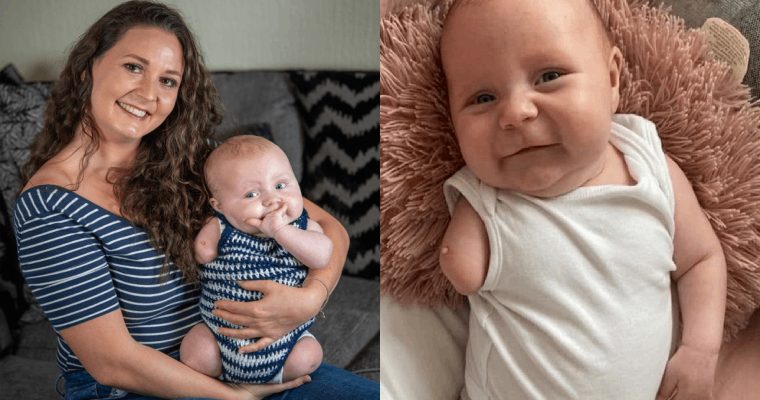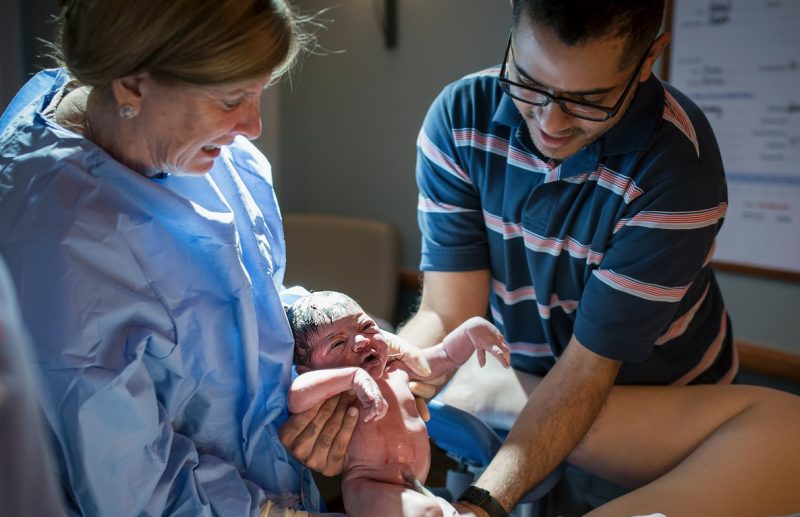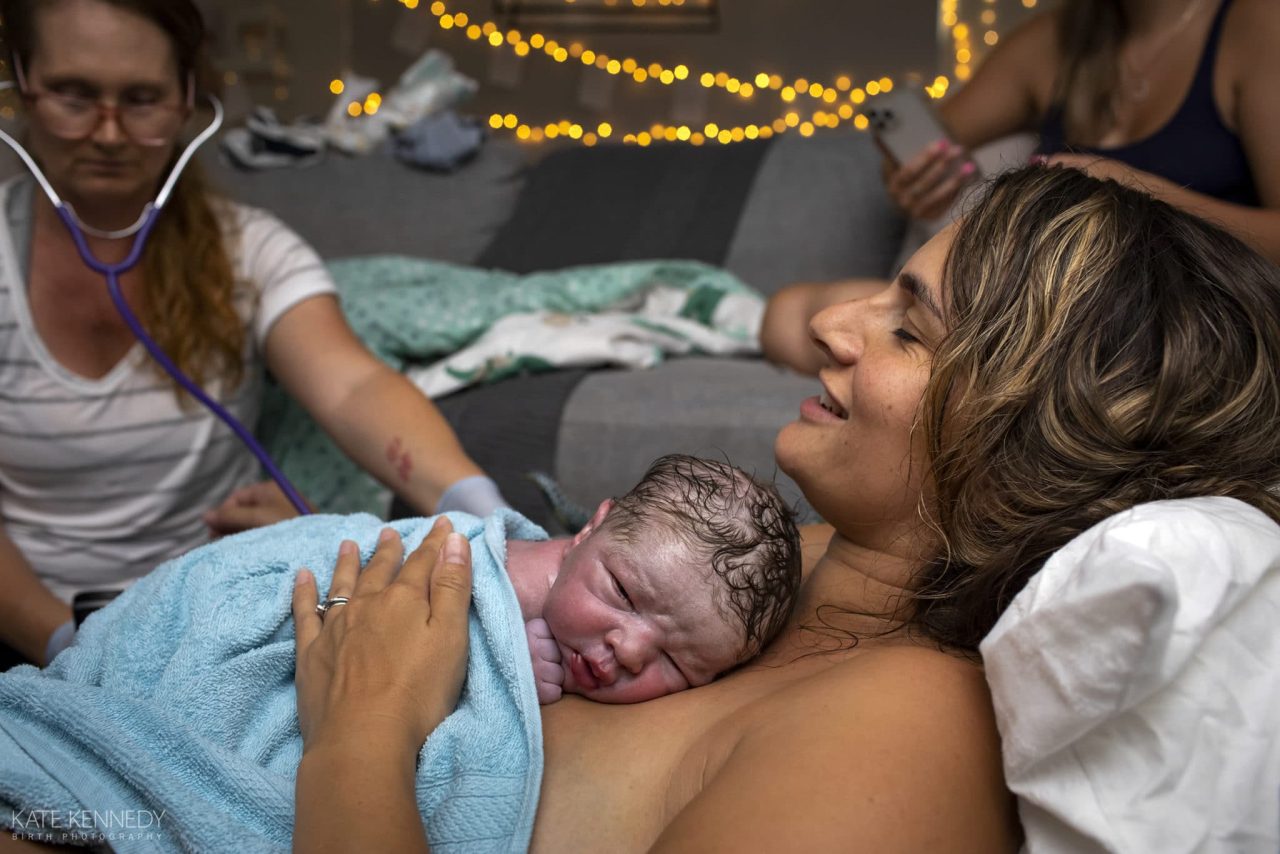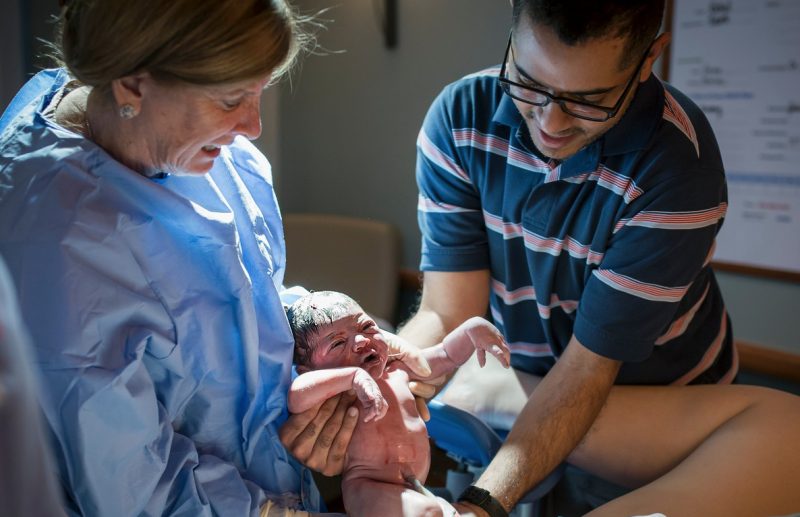No, they don’t run in either family and no, mom wasn’t taking fertility drugs.
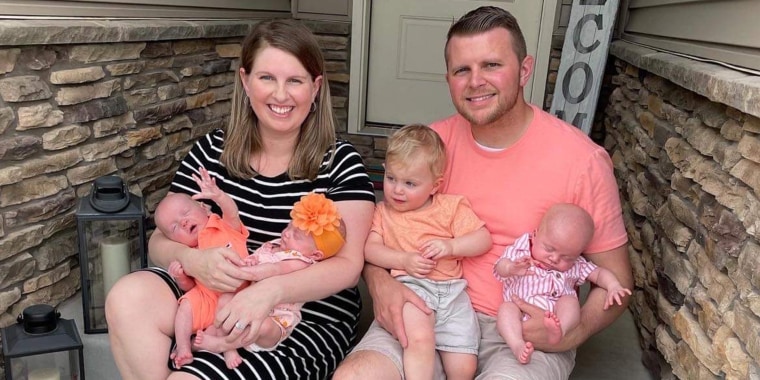
Soon after the COVID-19 pandemic started, Kellee Briggs learned she was pregnant. Her first ultrasound showed she was carrying triplets but two had died. She successfully delivered son Chase on September 24, 2020.
Then, 10 months later, she discovered she was pregnant again — with triplets — and delivered two boys and a girl this March.
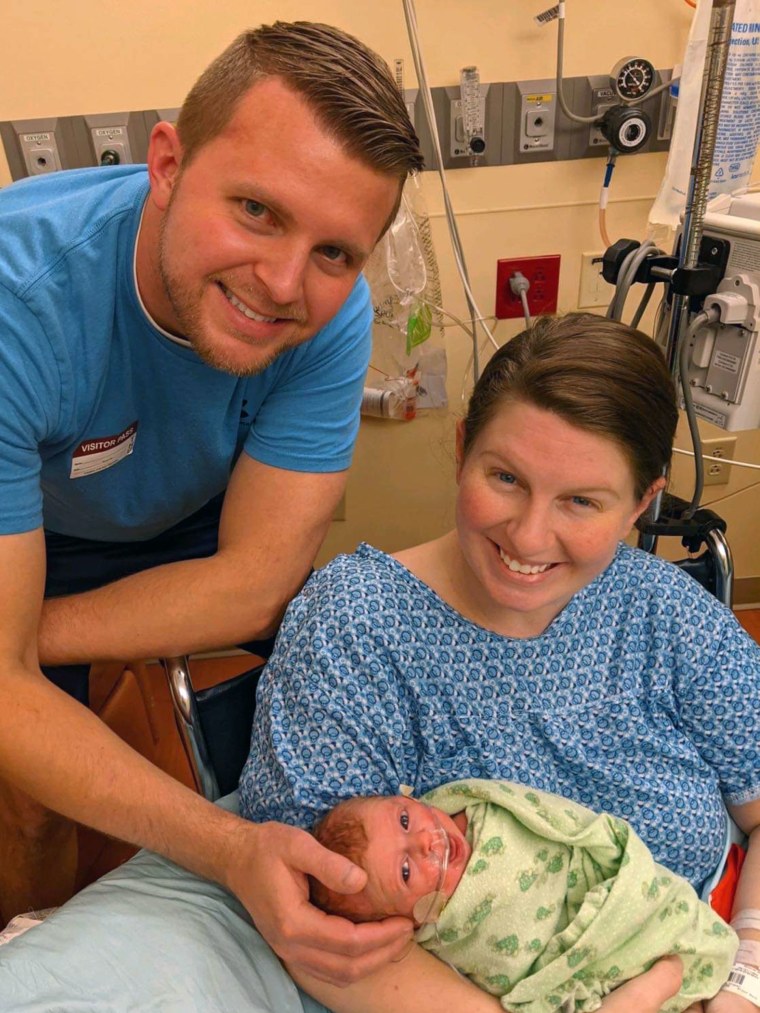
During that first pregnancy, the 10-week ultrasound was a shock.
“I’d never been pregnant before but I could tell from (the technician’s) face that something was wrong,” Kellee Briggs recalled. “She kept looking at it and rescanning and rescanning and I saw the screen. But it didn’t make a whole lot of sense to me.”
The tech finally revealed that Briggs had three amniotic sacs, which meant that she was pregnant with triplets. But only one baby remained.
“The one baby, Chase, which is our survivor, you’d see him fully formed but the other two sacs just looked like empty holes,” she said. “I’ve lost two babies and it was a lot of emotions all flooding in at the same time.”
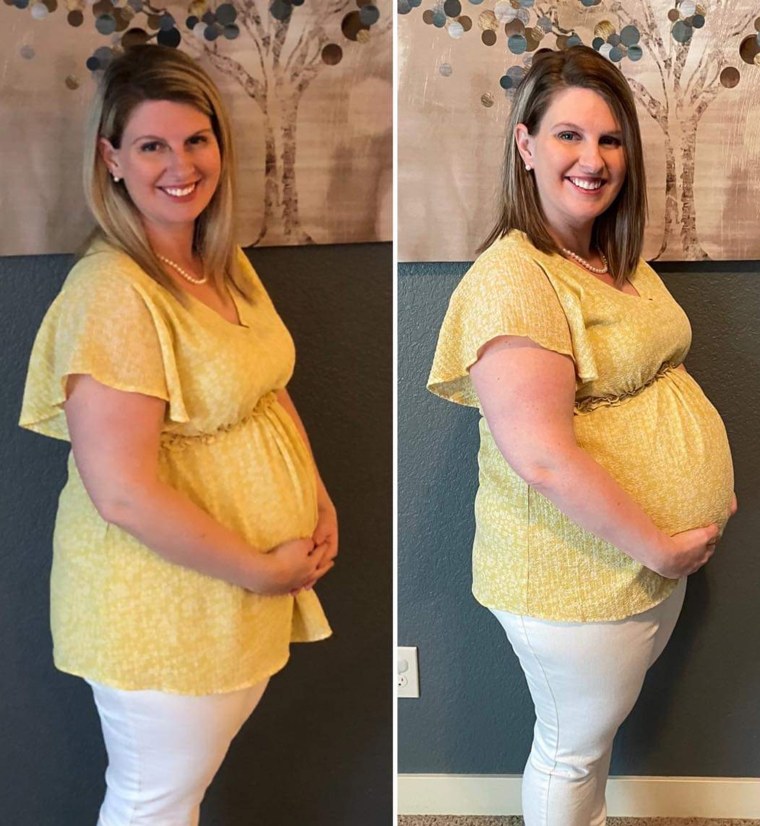
As they grappled with the loss, the couple also felt surprised by the triplet pregnancy. Neither of them have multiples in their family and Briggs wasn’t taking any fertility hormones.
“This was all just natural, so spontaneous, and really came out of left field. I had no idea that there were going to be multiples,” she said. “This was just a big shock.”
Doctors tried reassuring the couple that a single pregnancy was safer for both mom and baby.
“The doctors basically say, ‘This is a good thing. You don’t want to have triplets. Single pregnancy is the ideal pregnancy,’” Briggs said. “Of course, I didn’t feel that it was a good thing. I was heartbroken that two of them didn’t make it.”
‘I had a gut feeling’
The couple always wanted two children but their second pregnancy was a surprise.
“We’re both helping our son get ready for daycare and I instantly got really sick to my stomach,” she said. “(My doctor) ran the blood test to see if I was pregnant and when it came back the levels were so high that they said that I was several weeks pregnant, which was further than where I should have been based on timing. So I had a gut feeling.”
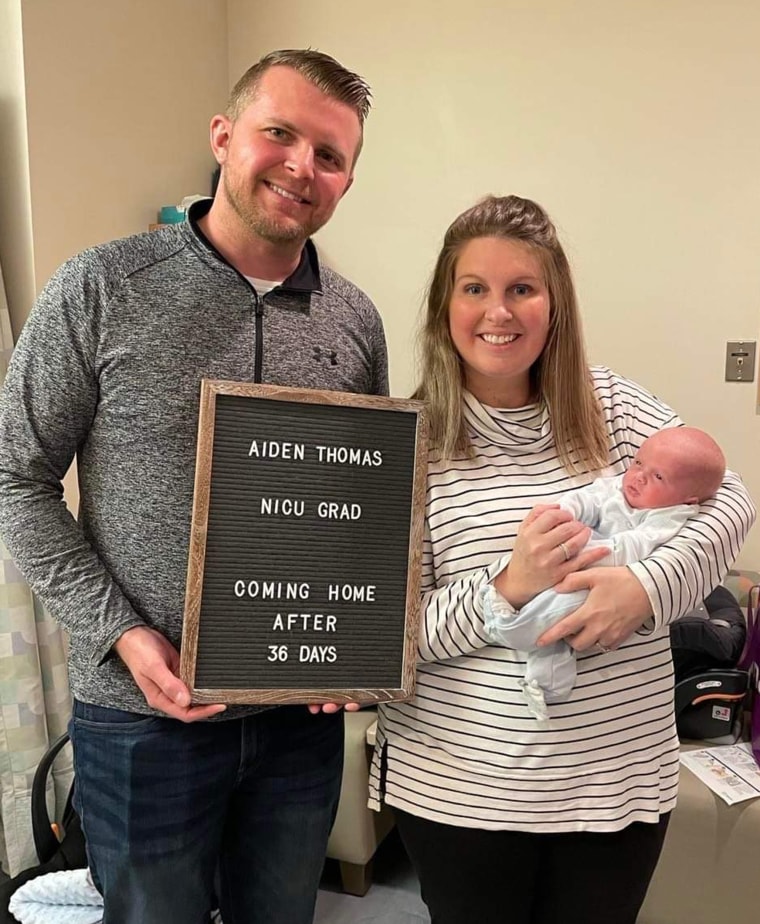
Briggs thought this time she was pregnant with twins.
“We looked at each other right away and we knew exactly what it looked like having the multiple sacs,” Nick Briggs, 34, told TODAY Parents. “We said to the tech, ‘There’s multiples aren’t there?’ and she looks and she’s like, ‘Yep.’”
The couple thought the tech looked nervous that she’d have to tell them they were having triplets.
“We just knew instantly and we started laughing. It was like, ‘Oh my gosh I can’t believe this happened again,’” Kellee said.
But then the worry started.
“I was having memories of the first time when we had lost two and the doctors said you didn’t want to have more than one,” she said. “You just start getting flooded with so many emotions.”
Doctors told her that 24 weeks was the earliest she could deliver and the babies would have a 50% chance of surviving. They hoped she could make it to 32 weeks at least where the chances were much greater.
“I’m getting scared at this point. How am I going to get these three kids here? And am I going to go through the same loss?” Kellee wondered. “It was so much of a heavy weight on us.”
Then doctors discussed the risk to mom, including increased chance of gestational diabetes, preeclampsia, risk of early delivery and extra strain on her heart.
“It was a worry to me and my dad had also passed away from a heart attack when I was young,” she said. “That was an added scare.”
Luckily, Kellee Briggs was able to work from home, which allowed her to rest. She developed gestational diabetes and preeclampsia. While she shared with friends and family that she was pregnant with triplets, she didn’t pick out names because she felt nervous.
“I was hesitant almost because I was afraid of getting attached,” she said. “I didn’t want to get attached and then lose one.”
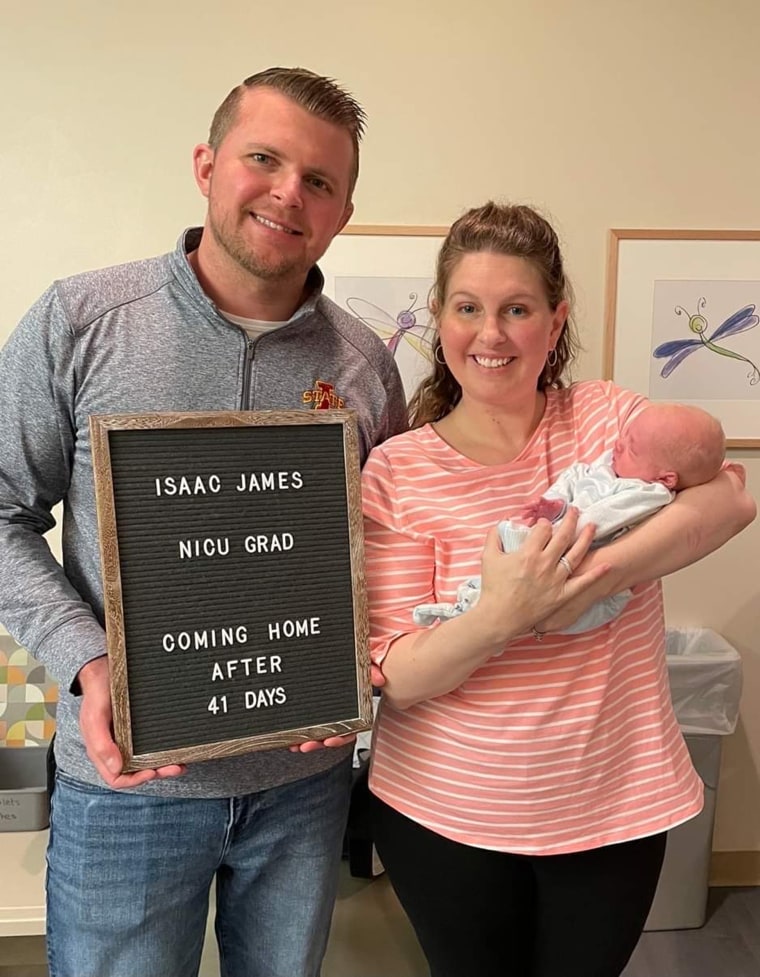
Dr. Christine Greves, who did not treated Kellee, said triplets are rare, accounting for one in 9,000 births. The chance of having twins is about one in 250 pregnancies. Two triplet pregnancies back to back is even rarer, with estimates around one in 64 million. Multiple babies are more common in older pregnancies.
“Age is one of the many things that can affect one’s risk for having multiples,” the OB-GYN from Orlando, Florida, told TODAY Parents. “Women who are between 35 to 40 are three times more likely to have twins.”
When Kellee Briggs hit 32 weeks, she was ready to deliver. Her health and the babies’ were deteriorating.
“I started having a lot of problems. I was having really high blood pressure. I was really dizzy. I was seeing what I call glitter in my eyes, which is the preeclampsia,” she said. “In the ultrasounds at that point they started to see that triplet C wasn’t as big as the others.”
The babies’ cord blood pressure was elevated so they conducted a C-section delivery. The Briggs welcomed Aiden, 3 lbs., 15 oz., Isaac, 3 lbs., 12 oz. and Addalyn, 3 lbs. 7 oz.
After Kellee went home, she developed Bell’s palsy, a paralysis that is common with moms and multiples.
She has since recovered. While the babies stayed in the neonatal intensive care between 30 and 55 days, they’re now home.
“They came home in the order that they were born,” Kellee Briggs said. “It was nice to get adjusted.”
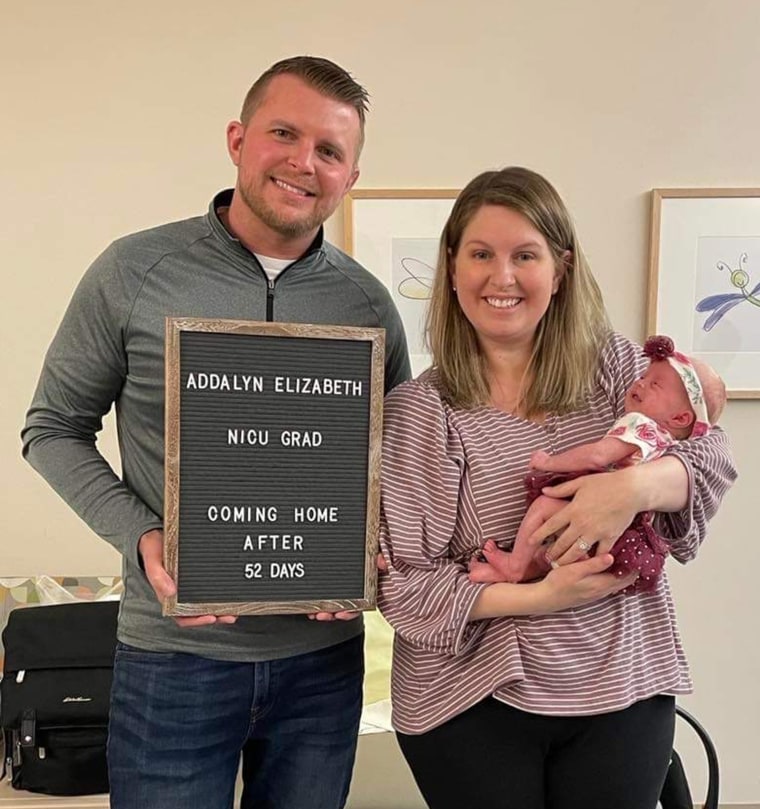
The mom and dad of four try to stick to a schedule with feedings, but learned early on that they should expect the unexpected.
“You just got to stop and relax and go with the flow. It’s all you really can do at this point because you’re trying to keep your head above water,” Nick Briggs said.
Kellee Briggs agreed.
“It’s been an adjustment having to say I can’t do it all myself and I need people.”
Sources:today.com



